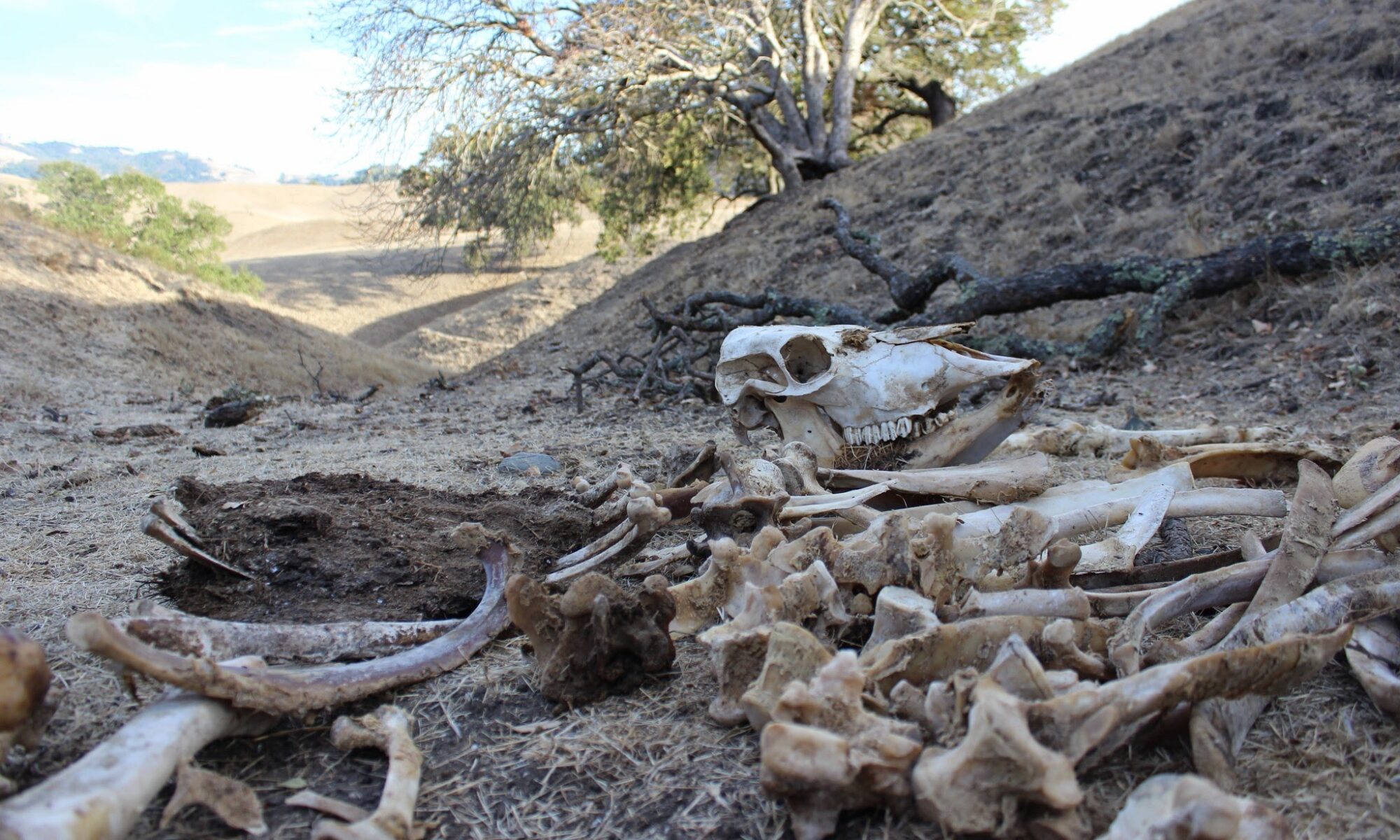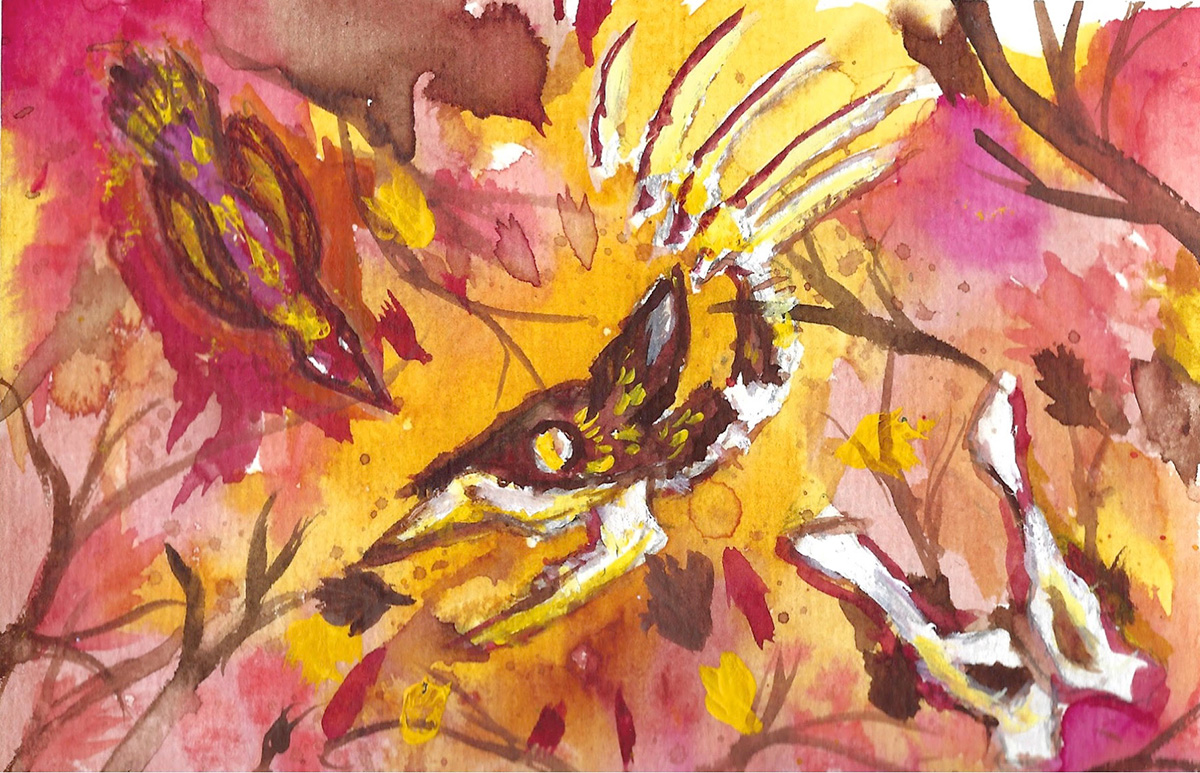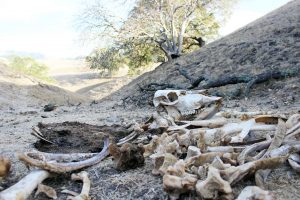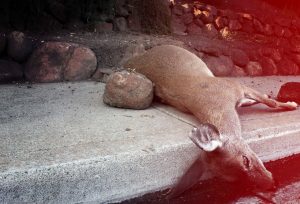Outlets for which I’ve worked:
Bay Nature – Newsweek – National Geographic – PBS Newshour
Ripley’s Believe it or Not! – LifeHacker – The Independent
Selections:
Human Skulls are Being Sold Online. But is it Legal?
Published at National Geographic.
In 2011, an archaeologist in the United Kingdom picked out one of the many human skulls sitting on his shelf. The 17th-century European male was missing most of his teeth and mandible, but the skull was clean and generally in decent condition. The archaeologist photographed it, described it, and listed it on eBay.
At the time, the popular online auction site allowed anyone to trade in human bones as long as the remains were clean, articulated, and for medical purposes. The 17th-century skull was neither articulated nor did it go to a doctor, but it did fetch the archaeologist $750, minus the usual fees from eBay and PayPal. Read more at National Geographic.
When an Animal Dies in a National Park, What Does the Park Service Do With It?
Published at Bay Nature
I’m always excited to see an animal in nature — even when it’s dead.
Not everyone feels that way, and you may wonder why the park staff doesn’t remove carcasses to make a prettier and safer experience for the viewers, like a city public works department cleaning public streets.
Well, there are reasons for that. What a park decides to do with a carcass depends largely on circumstance, science, safety, and pragmatism.
Deadly Fungus Found in California Salamanders
Published at Bay Nature
Imagine someone in your neighborhood buys a salamander for a pet – not a completely unlikely scenario in a country that imports more than 3.5 million amphibians every year. Salamanders are cute, small, and interesting pets, although they require specialized care. They’re appropriate for small living situations and a Covid-reduced world.
Every so often, however, one of those salamanders has a fungal pathogen. An owner might not know that the animal is infected if it’s without symptoms, or pre-symptomatic. But as everyone on Earth knows now, asymptomatic and pre-symptomatic carriers can spread a lot of disease. The salamander owner in your neighborhood could unwittingly release a diseased pet, or even just throw infected pet water in the yard. Something like this, scientists say, is just what has happened recently in California.
The East Bay is Full of Cattle Skeletons. Here’s Why.
Published at SFGate.
Today, the East Bay Regional Park District (EBRPD) maintains about 125,000 acres, 85,000 of which they lease to ranchers for livestock. With about 50 tenants grazing about 6,000 cattle on multiple use land, hikers are bound to run into some bovines. They chew cud languidly and eye you suspiciously as you pass. They’re perfectly safe with a wide berth and respectful distance, but if you get too close they will stomp and grunt. If you don’t heed those warnings, it could be worse.
How to Leave a Coronavirus Hotspot Safely
Published at Business Insider.
If you live in a place like New York where coronavirus cases are rising rapidly, it’s tempting to want to leave. Some are already doing so.
But health organizations and experts will tell you this is a terrible idea.
“Traveling to other cities will only increase the spread of infection. No part of the country is immune,” Ubydul Haque, an epidemiologist at the University of North Texas Health Science Center, told Business Insider.
The Antics of Wildlife-Loving Influencers Are Putting Human and Animals at Risk
Published at The Daily Beast.
When people feed wild animals, animals stop thinking of humans as a threat to be avoided, but as food sources. They can forget how to find food in their natural habitat, relying on humans and even becoming aggressive. If animal behavior takes that turn, sometimes the animal suffers the ultimate price.

The Plastic Pollution of Fishing Gear is Much Worse Than Straws
Published at Medium.
We love whales just as we love turtles and sharks, calling out for change when we see the animals with straws stuck in their nose or having their fins cut off for soup. And yet, despite the very well-documented pervasiveness of fishing gear as a fatal and copious presence in the ocean, having killed hundreds of thousands of the animals we love, it is not often part of the public conversation regarding ocean plastics.
Why?
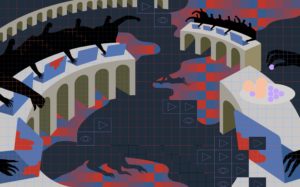
The Internet Has a Serious Problem with Murder Videos
Published at OneZero (Medium).
…Marek argues that BestGore serves a public good by preserving accurate documentation of the real violence that happens in the world. “By not seeing things for yourself, you are opening the door to being lied to and persuaded in one direction or the other,” he writes on the site’s landing page. “No matter how brutal, hard, sad, offensive, immoral, obscene or [fill in the blank] something is to look at, only by seeing it with your own eyes can you make up your own opinion on the matter and see truth.”
What motivates users to watch and share graphically violent videos of death? Many people might feel it would be disrespectful to those who died, or even psychologically damaging to watch such gruesome footage. Yet, some humans have always been drawn to the macabre. Violence for entertainment, in varying shades, is nothing new, but the internet has globalized extreme violence and made it hyper-accessible.
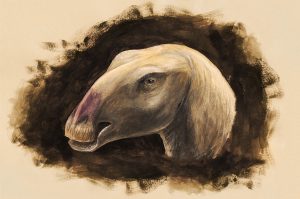
Duck-billed dinosaur skeleton from Gobi Desert is “virtually complete”
Published at Earth Archives
The first thing that the expedition team found in peeking from the rocks and sands of the Gobi Desert was a tiny tip of a large pelvis. The international team descended on the exposed fossil, and chipped and brushed away to reveal more and more bones. Eventually, they exposed an exceptionally rare find: the virtually complete skeleton of a new dinosaur species. Read more at Earth Archives.
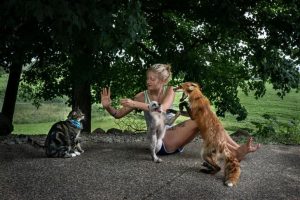
Rescued foxes find refuge in Minnesota
Published at National Geographic
When Photographer Robin Schwartz visited Mikayla Raines in Minnesota last July, it was a mystical experience. Raines’ property was surrounded by towering oak trees and waist-high, yellow-tipped grass. The photographer and her human subjects were covered in DEET and polka-dot bites from the swarms of mosquitoes. The heat was so intense that the two people who lived and worked there walked around in their bras, and the bright sun painted them with harsh lighting. “It was like a fantasy world,” Schwartz says.
Then, there were the foxes. Read more at National Geographic.
See the Lives of Street Cats Around the World
Published at National Geographic
For 18 years, Tuul and Bruno Morandi photographed the people, cities, and landscapes of the world. As they traveled, they accidentally started to accumulate extra photos of another, nonhuman subject: the furry, friendly faces of street cats.
In Tuul and Bruno’s book, La Grand Odysée des Chats (“The Grand Odyssey of Cats”), feline subjects relax against the bright blue buildings of Chefchaouen in Morocco, jump across ruins in Greece, and watch fishermen curiously in Japan, awaiting their opportunity to steal away with discarded fish scraps. Read more at National Geographic.
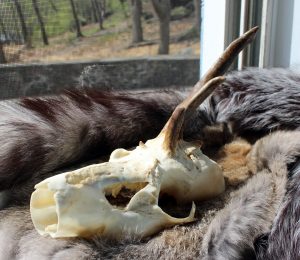
Nature’s Unicorn Deer
Published at Ripley’s Believe it or Not!
Antler development is a complicated field of study, so it’s hard to know for sure what causes an anomaly like this. Natural light, testosterone, diet, and age affect how big the antlers grow. However, sometimes mutations, injuries, and testosterone disorders can disrupt their normal growth process. A 2013 study published in the journal The Wildlife Society found that many white-tailed deer have abnormal antlers because of injuries. A 1965 study published in the Journal of Experimental Zoology found that several types of trauma can cause a deer to have atypical antlers, including if the bud of the antler is injured before the antler grows. Even leg injuries can result in antlers on the opposite side growing wrong!
So, what happened to the cervicorn? Gabriel Karns, a Wildlife ecologist at Ohio State University, who has studied deer injuries, says the unicorn’s head was probably hurt somehow. “Car collision is as good a guess as any,” he explained. Read more at Ripley’s Believe it or Not!
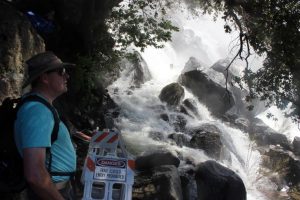
How Climate Change Could Ruin Your Outdoor Plans
Published at Newsweek.
Last June, Wapama Falls at Yosemite National Park flooded. A winter with record snow, followed by a summer with record heat, meant record water gushed from the falls on the popular Hetch Hetchy trail.
As hikers cross, they are usually treated to a splash of water and mist. But last year, for the first time in at least several decades, the falls engulfed the bridge, pouring roaring waves over the trail for several meters on either side of the trail.
Yosemite workers put up signs saying “Danger, Trail Closed, Entry Prohibited,” turning back disappointed hikers. Not all hikers turned tail, though. In that late June, a 66-year-old hiker crossed the bridge, lost his footing and fell to his death. Read more at Newsweek.
Almost All Online Pharmacies are Illegal
Published at Newsweek.
You can buy nearly anything on the internet, but if you buy drugs from an online pharmacy, there’s a good chance that exchange is illegal—or worse.
The Center for Safe Internet Pharmacies, or CSIP, recently released a report on opioid sales on the darknet. They found that people on both the darknet and surface web sell drugs like opioid painkillers through online “pharmacies,” 97 percent of which operate illegally, according to the FDA. Read more at Newsweek.
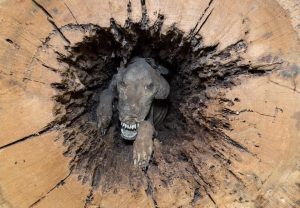
Dog Stuck in Tree for 60 Years Doesn’t Rot
Published at Newsweek.
When loggers for The Georgia Kraft Corp. cut off the top of a chestnut oak tree to load it into a transport truck, they saw a brown and white hunting dog peering out at them from the hollow space in the log. But the loggers were about two decades too late to save the canine from his woody fate. All that was left was a dried, mummified hound, petrified in an eternal struggle to escape. Read more at Newsweek.
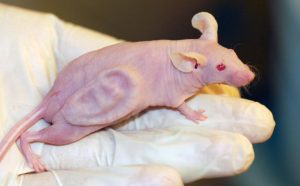
Whatever Happened to the Mouse with the Ear on its Back?
Published at Newsweek.
Throughout the public consciousness, the mouse is still an icon of the power of science. On the 20th anniversary of this noteworthy development, Newsweek spoke with Joseph Vacanti to hear what he has to say about the mouse, looking back two decades later. Read th interview at Newsweek.
Animal Welfare: What Will Happen to China’s Famous Cloned Monkeys?
Published at Newsweek.
In late 2017, Chinese scientists saw the birth of the world’s first primates cloned by the same method used to clone Dolly the sheep. Zhong Zhong and Hua Hua, two adorable crab-eating macaques, took the world by storm, and scientists believe that they are just the first in a long line of monkeys that will be cloned for medical research.
Mu-ming Poo, one of the scientists who helped clone the monkeys, calls them “national treasures.” But what will happen to them now that the photo-ops and media coverage have subsided? Read more at Newsweek.
When Whimsical Wildlife Photography isn’t What it Seems
Published at PBS Newshour.
Take a look at the photo above. It looks whimsical, or so thought some at the NewsHour last Thursday, when it was posted as part of our Photo of the Day series. But soon after, members of the science desk raised their suspicions about the photo.
It seemed lucky for the photographer to capture such an odd behavior in nature. Too lucky … Plus, the picture was reminiscent of a viral photo from 2015, involving a frog “riding” a beetle. That photo had been discredited as staged, and people accused the photographers of animal cruelty. So like a Sherlock-Holmes-meets-Dorothea-Lange, I dug into whether or not the frog-riding-turtle photo was legit. What we found highlights the cloudy intersection of wildlife photography, animal welfare issues and journalistic integrity of photography in an age of digital consumption. Read more at PBS Newshour.
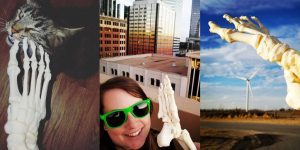
She Took Her Amputated Leg Home, and You Can Too
Published at PBS Newshour.
When Oklahoma native Kristi Loyall had her foot removed, she got it back in a plastic bag.
In 2011, Loyall noticed that her right pinky toe was numb. Despite a series of doctors’ visits, the numbness spread and grew painful. It turned out her foot and lower leg had cancer. As soon as her new oncologist suggested amputation, Loyall asked about keeping the severed limb.
“He thought I was joking, and I was like no, I really want it back,” the 25-year-old Loyall told NewsHour.
Maybe you’ve had a part of your body removed, a kidney stone or a frostbitten toe, and the hospital disposed of it after the procedure. But what if you had wanted to keep it for your mantle or to scare your friends at Halloween?
Sometimes, doctors refuse to give back the body parts, saying that it’s “a biohazard” or “illegal.” Yet, neither of these are completely true. Keeping your own body part isn’t inherently anymore dangerous than keeping a steak, experts say. Read More at PBS Newshour.
Everything You Were Afraid to Ask About Roadkill
Published at National Geographic.
There are fatalities on all sides when animals share a habitat with human beings. Animals who are migrating, tracking a mate, or looking for food and water have to cross roads, unaware of the speeding metal danger that is the automobile. Each crossing is a danger to them, and they may or may not get to the other side.
Once they are hit, they can cause serious damage to a car or the people in it. If they’re small enough, though, carcasses may appear to drivers as simply furry lumps on the roadside. But that’s not the end of the story.
There are a variety of different fates that roadkill can meet. Read more at National Geographic.
What would a Massachusetts Ban on Ivory mean for Elephants and People?
Published in The Harvard Law Record
After searching out a dozen antique stores in Boston, I finally found ivory on Newbury Street. The antique earrings were about the size of a pair of pencil erasers, white and with tiny black ships scrimshawed into them. I turned them over in my fingers and tried to determine how they were different from the bone, plastic, tagua nut and mammoth ivory I had seen before.
The store was small and sun-lit, and probably not the only store in Boston or Cambridge selling ivory. I asked the other shopkeepers in the neighborhood if they had any. “Not really,” said one. “It’s illegal,” said another. “But there is a guy up the street . . . Tell him I sent you.” Read more at The Harvard Law Record.
Don’t Call it a Body Farm
Published in The Boston University News Service
Consider the residents of Boston University’s Outdoor Research Facility: two adult deer, several Canada geese, a groundhog, a painted turtle, some rats who were addicted to cocaine during their life, and over 50 more animals. All the creatures brought to the facility are dead, but that’s intentional. These animals, found or confiscated by Massachusetts Fisheries and Wildlife, help BU students and scientists with research projects studying decay, bone trauma, mortuary science, zooarchaeology, and more. Read more at the Boston University News Service.
Of Dragons, Wolves and Sheep: The Murder of an Internet Anti-Celebrity
Originally published in California State University, Northridge’s Scene Magazine, republished online at Medium.com.
“Starblade,” as Matthew Paul Finnigan called himself, had cried wolf too many times. Threats of suicide were regular occurrences on his LiveJournal, FurAffinity, and Twitter accounts. Few took it seriously when he wrote that someone else wanted to kill him. Read more at Medium.com.
